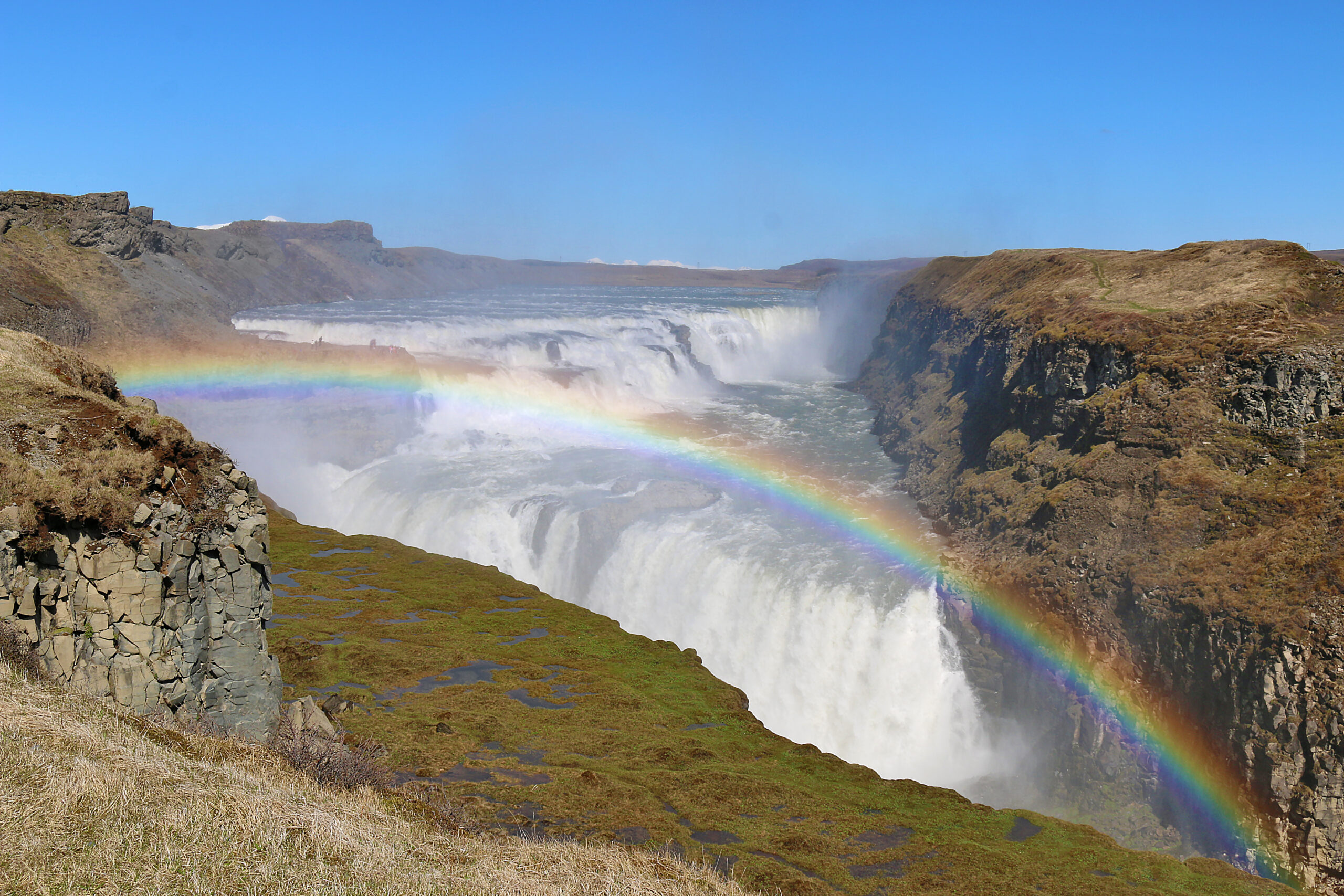Gullfoss in Iceland is the most popular waterfall in the country, as it is one of the three top landmarks of the renowned Golden Circle. Its Icelandic name translates to golden waterfall in English. Its formation occurred during the last ice age, when glacial runoff carved out a deep canyon in the Hvítá River.
Spectacular Gullfoss in Iceland.

The trails to get to the viewpoints of Gullfoss are maintained well and easy to navigate for most people.

What is unique about Gullfoss is that it is primarily viewed from above — unlike many other waterfalls, which are typically viewed from below…

…and the views can be from multiple angles around the west side of the waterfall.

One can see the water vapor rise from the bottom of Gullfoss — even when the waterfall is not within view.

Because the strong flow of Gullfoss plunges into a gorge of foaming water, viewing it from the bottom is virtually impossible.

Visitors congregate on one of several viewing areas that are available at Gullfoss — but some of them are not open all year round, as navigating the trails to get to them in snow and icy conditions can become treacherous.

The total height of Gullfoss is 32 meters. Of its two falls, the one with the highest drop is 21 meters tall.

Melting water from Langjökull — which is the second largest glacier in Iceland — becomes ground water that feeds into the Hvítá River approximately 35 kilometers or 21.7 miles north of Gullfoss.

The Ölfusá River is formed at the convergence of the Hvítá River and the Sog River. The view in the photograph above is facing east, with the waters of the Hvítá River flowing from the north and northeast.

Literally hundreds of people could be visiting Gullfoss at any given moments — especially when the weather is similar to the day I visited: bright sunshine with few clouds in the sky; a light breeze; and cool temperatures with the sun warming the air.

Only a small fence of two thin ropes separates visitors from the sheer drop below.

Much speculation abounded during the majority of the twentieth century about the use of Gullfoss to generate hydroelectricity by damming the Hvítá River in the 1920s, as the waterfall was rented indirectly to foreign investors by Tómas Tómasson and Halldór Halldórsson, who were the owners of the waterfall at that time.

Lack of funds was only one of the reasons that the attempts to use Gullfoss to generate electricity were unsuccessful.

A memorial of Sigríður Tómasdóttir — who was the daughter of Tómas Tómasson — was erected and placed near Gullfoss. It is comprised of stone.

The legend is that Sigriður was determined to preserve the natural and environmental aspects of the waterfall and save it from exploitation. She even purportedly threatened to throw herself down into the waterfall to save it.

The waterfall was later sold to the state of Iceland, and is now protected.

Look closely at the two previous photographs and you will see people on the edge of a cliff — which is one of the viewing platforms — towards the top on the right side.

The average amount of water which runs down Gullfoss is approximately 141 cubic meters or 5,000 cubic feet per second in the summer; and approximately 80 cubic metres or 2,800 cubic feet per second in the winter.

This sheer volume of water means that Gullfoss could fill almost one Olympic swimming pool every second; or 50 Olympic swimming pools in one minute.

Gullfoss has been open to visitors since 1875.

Final Boarding Call
Give yourself at least an hour to enjoy viewing Gullfoss in southwestern Iceland — although you will likely want to spend more time there. The drive of 9.6 kilometers east from Geysir Geothermal Area will only take ten minutes.
No admission is charged to see Gullfoss; and the viewpoint is never closed to anyone who wants to visit it. Complimentary parking is available in two parking lots nearby.
Toilets are available at the visitor center; and visitors can dine at Gullfosskaffi — or Gullfoss Café — for a snack or a small meal.
Plan to spend at least one hour and 45 minutes to drive the approximately 117 kilometers from Reykjavik.
All photographs ©2018 by Brian Cohen.

